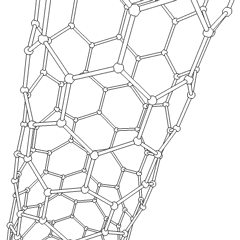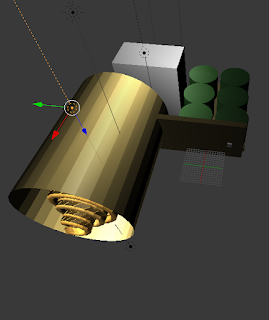THORP Math
Temporal Hyper Onion Router as a Protocol, Encryption Scheme.
Anonymity and security with end to end layered encryption. Meant for quantum computers and TARDIS CORE communications. Round Robin, P2P, Onion Architecture. 3 nodes, expandable according to math . Perfect forward secrecy. A secure authentication scheme to be routed underneath.The communications channel consists of inter-dimensional and inter-temporal, directional high intensity frequency-hoping microwave bursts. These are routed randomly though time and space according to the system. The duration of the circuits are at a per packet cycle, a new circuit is open on a per message basis. Only the sending node knows the circuit path taken there and the way back. This uses a AES, SERPENT and TWOFISH cascade as Symmetric Encryption for the the data passed. It also uses Extremely long key RSA as asymmetric Encryption/Decryption of the address to the next node. Only at the last node the Symmetric key for the Data on the path in question. Circuits looped three times through THORP (as a 9 node hop recommended).Udp AES encrypted packets with RSA encrypted muti-layered onion ip header. last sending header contains a symmetric AES key to unlock the AES encrypted bulk of the udp packet, As well as a symmetric AES key to for the return bulk of the packet. sending and receiving multiple node hops in each direction Determined by the sender. Routes are only known by the sender. Node simply strips away RSA encrypted Headers, Reads the next IP and sends. up until the last node in which the AES key is reveled.
n(A)xyz T.p,K(A), PK(A)
n(B)xyz T.p,K(B), PK(B)
n(C)xyz T.p,K(C), PK(C)
Information to be sent to last node; RH SK RSK CTa
What the first node has to do.
Route to last node, encryption layers done first;
n(A)xyz T.p {
E
SK (Ma) = CTa
H(A) {
(C) 1 layer
E
PK(C) (RH SK RSK) = H(C)
<Encrypt with PK = public asymmetric key (C) the following, RH = Return Header, SK = Symmetric key, RSK = Return Symmetric key. = Header (C)>
(B) 2 layer
E
PK(B) (H(C) A(C)) = H(B)
<Encrypt with PK = public asymmetric key (B) the following, H(C) = Header (C), Address
C>
(A) 3 outer layer
E
PK(A) (H(B) A(B)) = H(A)
<Encrypt with PK = public asymmetric key (A) the following, H(B) = Header (B), Address
A>
}
H(A)
CTa
send out too (A), n(A)-> B-> C
Route to first node, encryption layers done first;
RH (A)
{
(A) 1 layer
E
RPK(A) (DATA) = RH(A)
<Encrypt with RPK = Return public asymmetric key (A) the following, RH(B) = Return Header (B), >
(B) 2 layer
E
RPK(B) (RH(A) A(A)) = RH(B)
<Encrypt with RPK = Return public asymmetric key (B) the following, H(A) = Return Header (A), Address (A)>
(C) 3 outer layer
E
PK(C) (RH(B) A(B)) = RH(C)
RH(C)
CTb
Send out too (C), n(C)-> B-> A
}
Public Decryption route to last node;
D
n(A)T.p K(A) (H(A)) = H(B) A(B)
Node (A) <n(A)T.p> Decrypt with K = private asymmetric key(A), Header(B) Address (B).
D
n(B)T.p K(B) (H(B)) = H(C) A(C)
Node (B) <n(B)T.p> Decrypt with K = private asymmetric key(B), Header(C) Address (C).
D
n(C)T.p K(C)(H(C)) = RH SK RSK
Node (C) <n(C)T.p> Decrypt with K = private asymmetric key(C), RH = Header, SK = Symmetric key, RSK = Return Symmetric key.
last node Received; RH SK RSK + CTa
What the Last node has to do.
n(C)xyz T.p {
D
SK (CTa) = Ma
Symmetrically Decrypt with SK = Symmetric key, Ca = Ciphertext(a), for M = Message
E
RSK (Mb) = CTb
Symmetrically encrypt with SK = Symmetric key, M = Message (b) to CTb = Ciphertext (b)
}
RH(A)
CTb
Public Decryption route from last node to first node;
D
Rn(C)xyz T.p RK(C) (RH(C)) = RH(B)RA(B)
<Node (C) decrypt with RSK = Return Symmetric Key(C), Return Header(C) to Return Header(B), Return address (B) on to (B)>
D
Rn(B)xyz T.p RK(B) (RH(B)) = RH(A)RA(A)
<Node (B) decrypt with RSK = Return Symmetric Key(C), Return Header(C) to Return Header(B), Return address (B) on to (B)>
D
Rn(A)xyz T.p RK(A) (RH(A)) = null
+ CTb
Node (B) decrypt with RSK = Return Symmetric Key(C), Return Header(C) to Return Header(B), Return address (B) on to (B)>
First node Receives; RH(A) Cb
to:
on.p {
D
RSK (Cb) = Mb
}
Flow of info
headers are tied to ciphertext
;
on.p, H(A) CTa -> a(A)xyzT.p, H(B) CTa -> a(B)xyzT.p, H(C) CTa -> a(C)xyzT.p
a(C)xyzT.p, RH(C) CTb -> Rn(B)xyzT.p, RH(B) CTb -> Rn(A)xyzT.p, RH(A) CTb -> on.p
KEY;
M = Message
T = Temporal Hash
xyz = Spatial Parameter
SK = Symmetric key
RSK = Return Symmetric key
CT = Ciphertext
K = Private asymmetric key
PK = Public asymmetric key
RPK = Return Public Asymmetric key
R = return
A = address
n = node
on = originating node
H = header
To be hard coded into a series of chips and onto a network interface card that directly interfaces onto the THORP Network. 443 port, dipped in black quick dry epoxy to keep reverse engineering, and water resistant. tamper proof.
EVE & B1TSH1FTER FOREVER!!!









